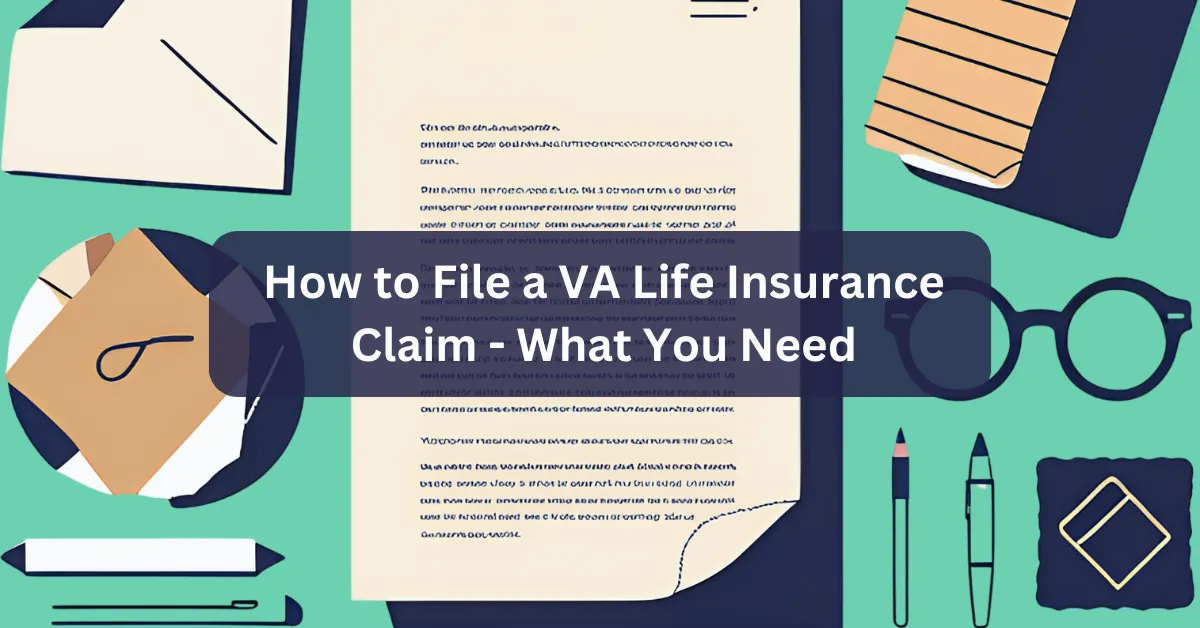Filing a VA life insurance claim can feel overwhelming, especially when dealing with the loss of a loved one. However, knowing the process beforehand can help ensure a smooth experience.
VA life insurance provides financial security to veterans and their families, offering coverage under various programs. Understanding the claims process is crucial whether you are a spouse, dependent, or designated beneficiary.
This guide walks you through the essentials—what VA life insurance policies cover, when to file a claim, and what to expect. You can avoid delays and receive benefits without unnecessary stress with the correct information.
Understanding VA Life Insurance Policies
VA life insurance provides financial protection for veterans, service members, and their families. Different programs exist, each with unique eligibility criteria and benefits.
- Servicemembers’ Group Life Insurance (SGLI) covers active-duty members
- Veterans’ Group Life Insurance (VGLI) allows continued coverage after service
- Family Servicemembers’ Group Life Insurance (FSGLI) extends coverage to spouses and children
- Service-Disabled Veterans Insurance (S-DVI) supports those with service-connected disabilities
Eligibility to file a claim depends on the policy. Beneficiaries include spouses, children, or individuals named in the policy. Knowing which policy applies ensures you file the correct claim.
When to File a VA Life Insurance Claim
You should file a VA life insurance claim as soon as possible after a veteran, service member, or covered dependent passes away. Prompt filing helps avoid unnecessary delays in receiving benefits.
Generally, there is no strict deadline for filing, but claims should be submitted within a reasonable timeframe. Waiting too long can complicate the process, especially if documentation is misplaced or unavailable.
Processing times vary based on policy type and the completeness of submitted documents. On average, claims are processed within 30-60 days.
However, missing paperwork or disputes over beneficiaries can extend this period.
Required Documents for a VA Life Insurance Claim
You must gather the right documents before filing a VA life insurance claim. Submitting accurate paperwork will speed up the claims process and reduce the chance of delays or denials.
- The most critical document is the insured’s death certificate, which serves as proof of passing. You’ll also need a completed VA life insurance claim form, such as VA Form 29-4125, for most policies.
- If you are the beneficiary, proof of identity may be required. This can include a government-issued ID or legal documentation if you are a legal guardian or executor.
- For policies like SGLI and VGLI, military service records might be necessary to verify coverage.
Sometimes, a copy of the insured’s will or legal documents may help clarify beneficiary designations.
Having these documents ready before submitting your claim can prevent back-and-forth delays. Make copies of everything and double-check requirements to ensure a smooth process.
How to File a VA Life Insurance Claim (Step-by-Step Guide)
Filing a VA life insurance claim doesn’t have to be complicated. A step-by-step approach can help ensure you submit everything correctly and receive your benefits without unnecessary hold-ups.
Step 1: Gather All Required Documents
This includes the death certificate, completed claim form, and any supporting paperwork needed for verification.
Step 2: Identify the Correct Claim Form
Different VA policies require specific forms. For example, VGLI claims use Form SGLV 8283, while FSGLI claims require Form SGLV 8283A.
Step 3: Complete the Claim Form Accurately
Fill out all required fields, ensuring the information matches official records to avoid processing issues.
Step 4: Submit the Claim
Depending on the policy type, you can mail, fax, or submit your form online through the VA’s official website.
Step 5: Wait for Processing
The VA typically processes claims within 30-60 days, but missing documents or additional verification may extend this timeframe.
Step 6: Follow-up If Necessary
If you haven’t received a response within the expected timeframe, contact the VA for updates and provide any additional details they request.
Common Challenges in Filing a Claim and How to Overcome Them
Filing a VA life insurance claim isn’t always straightforward. Delays and denials can occur due to missing documents, incorrect information, or confusion about eligibility.
- One major issue is submitting incomplete paperwork. If even one required document is missing, the VA may delay processing.
Double-check the claim form and attach all necessary documents, including the death certificate and proof of identity.
- Another challenge is incorrect beneficiary information. The VA may need additional verification if the named beneficiary is unclear or outdated.
Keeping beneficiary designations updated and providing supporting legal documents can resolve this issue.
- Processing delays can also be frustrating. The VA may take longer than expected due to high claim volumes or verification requirements.
Following up regularly with the VA can help move things along.
- Finally, some claims are denied due to eligibility concerns. If this happens, review the denial letter carefully and consider appealing the decision with additional supporting evidence.
You can minimize delays and ensure a smoother claims process by staying prepared and taking quick actions.
What to Expect After Filing a Claim
Once you’ve submitted your VA life insurance claim, processing begins. During this time, the VA verifies all documents and checks for any missing information.
If additional details are needed, they will reach out to request clarification, which may extend the timeline.
Benefits are usually paid out as a lump sum or structured payments if the claim is approved, depending on the policy. You’ll receive a confirmation letter detailing the payout and next steps.
If your claim is denied, the VA will provide a reason in writing. You can appeal the decision by submitting additional evidence or correcting errors in the initial application.
Conclusion
Filing a VA life insurance claim requires attention to detail, but understanding the process can make it easier.
If you face difficulties, don’t hesitate to follow up with the VA or seek assistance from a veterans’ service organization. Knowing what to expect after filing a claim will allow you to stay prepared for any next steps.
